Marzipan and museums: a long weekend in Lübeck, Germany
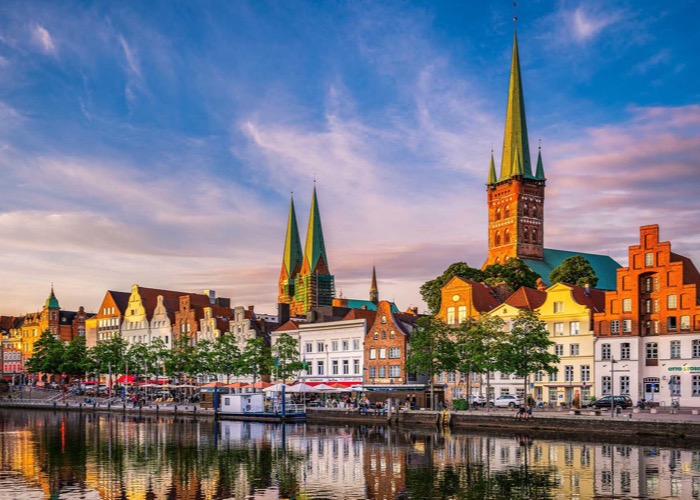
Get to grips with Lübeck – an underrated German city with a fascinating history and a sweet tooth.
Lübeck, a short train ride to the north of Hamburg, is a UNESCO-listed coastal city filled with historic sights and famed for its obsession with marzipan – that’s thanks to its role as a Hanseatic city, and the trading routes which once brought key ingredients (namely marzipan and sugar) to Northern Germany.
Here's how to enjoy a sugar-fuelled exploration of this northern gem over a weekend.
Friday
Check-in at: Motel One Lübeck, a wallet-friendly crash-pad with the feel of a boutique hotel. Oh, and a lot of turquoise, whether it’s the velvet-coated chairs in the foyer or the vases in the breakfast area. There are plenty of nods to the location, too – Lübeck is a Hanseatic city and tributes to its seafaring heritage include miniature wooden ships in the public areas and black-and-white drawings of sailing ships in the bedrooms.
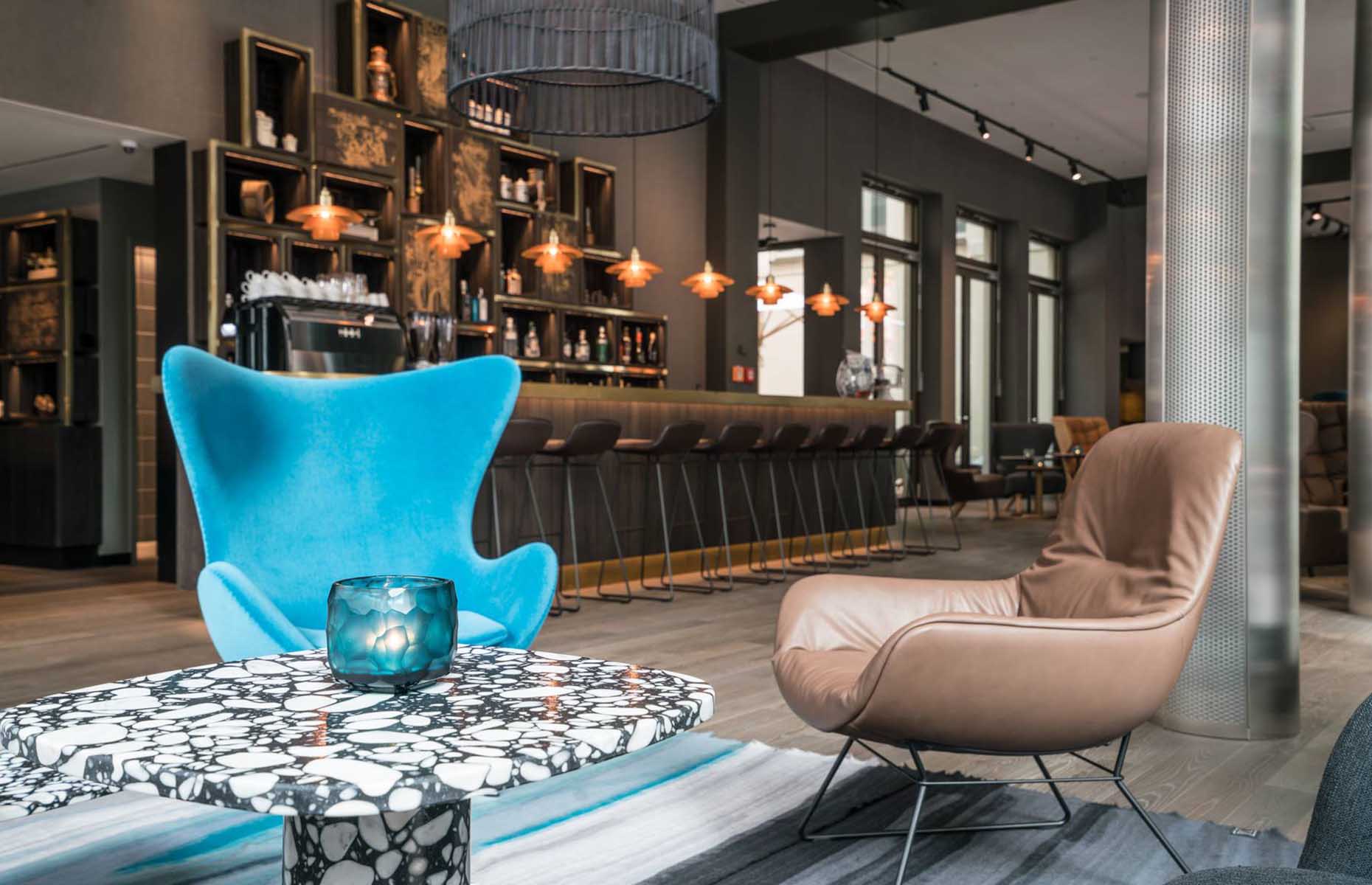 Motel One Lübeck/Facebook
Motel One Lübeck/Facebook
Get your bearings: A good starting point is the Holsten Gate, a twin-towered city gate that marks the western boundary of the city’s Old Town. You’ll see the building everywhere – carved out of marzipan in the Niederegger museum and store (more on that later), on the sides of steins in the city’s beer houses, and on postcards, magnets and keyrings.
Its size makes it a great navigational aid, but make sure you check out the museum inside, which explains how the city became a Hanseatic powerhouse. The most fascinating exhibits include collection boxes from the 1700s – almost every merchant guild had one, mainly because many of the filthy-rich tradesmen believed giving to the poor would guarantee them a safe passage to heaven.
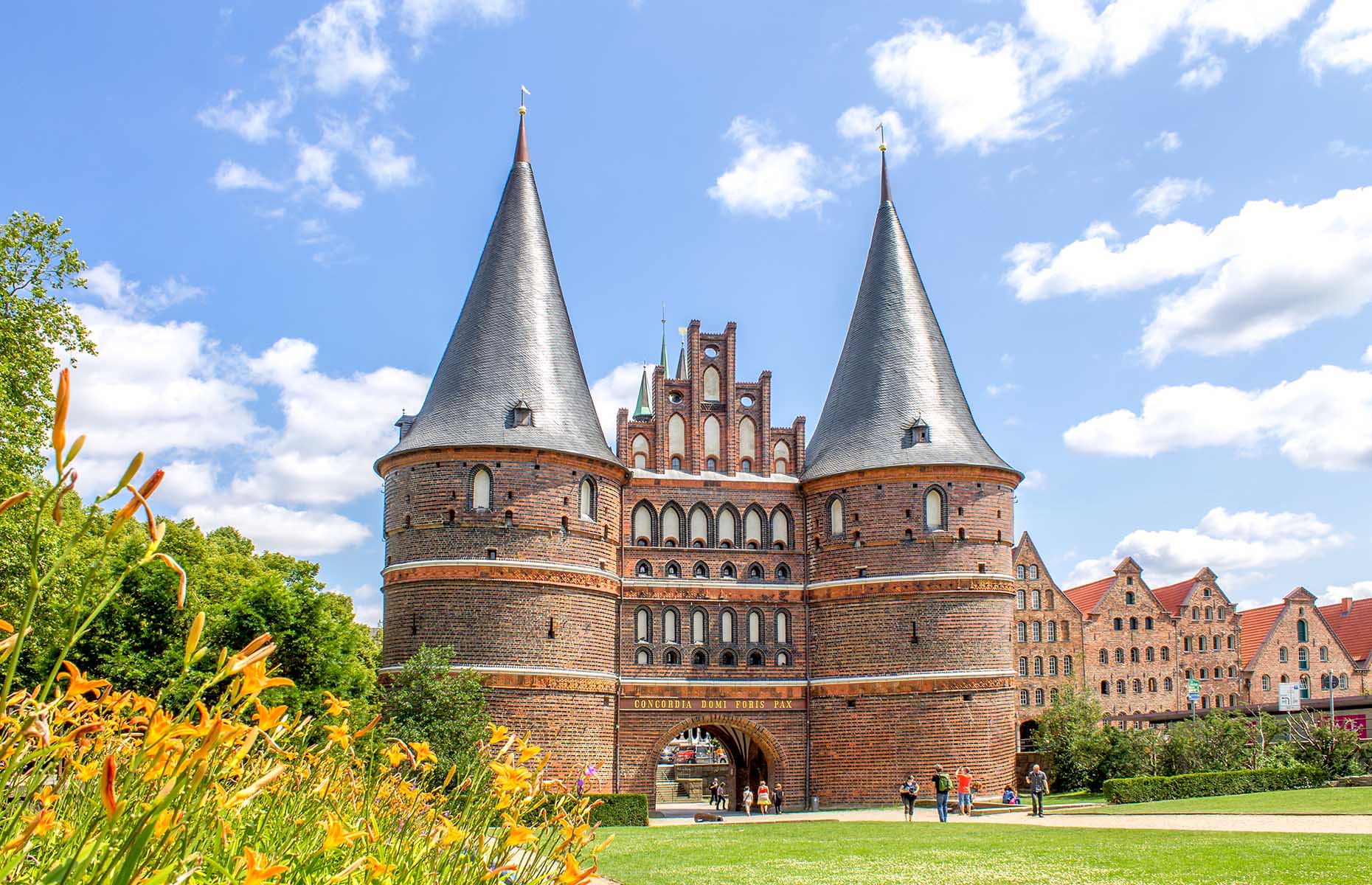 Sina Ettmer Photography/Shutterstock
Sina Ettmer Photography/Shutterstock
Get a sugar fix at: Niederegger. Marzipan – or at least Lübeck Marzipan, widely regarded as the gold standard – has EU Protected Designation of Origin certification, the same certification applied to items such as Champagne. And the best place to sample it is at the Niederegger boutique, where there’s a shop, café and museum – the marzipan brand’s factory, from which products are sent worldwide, is just outside the city.
The shop floor, with its supersized marzipan sculptures of Lübeck landmarks, has thousands of items made from this almond-based delicacy, ranging from miniature marzipan leeks and apples to iPhones, supercars and dinosaurs. Things get even more impressive in the museum upstairs, where exhibits include an enormous marzipan sculpture depicting key figures from Lübeck’s past, alongside a marzipan sailing ship.
READ MORE: A weekend in Hamburg – Germany's quirky port city
Take a peek at: the broken bells of St Mary’s Church. The church is a sight in itself, but the shattered remains of the two bells shouldn’t be missed. In March 1942, allied forces bombed the church and seven bells, weighing a total of 26 tonnes, crashed to the ground.
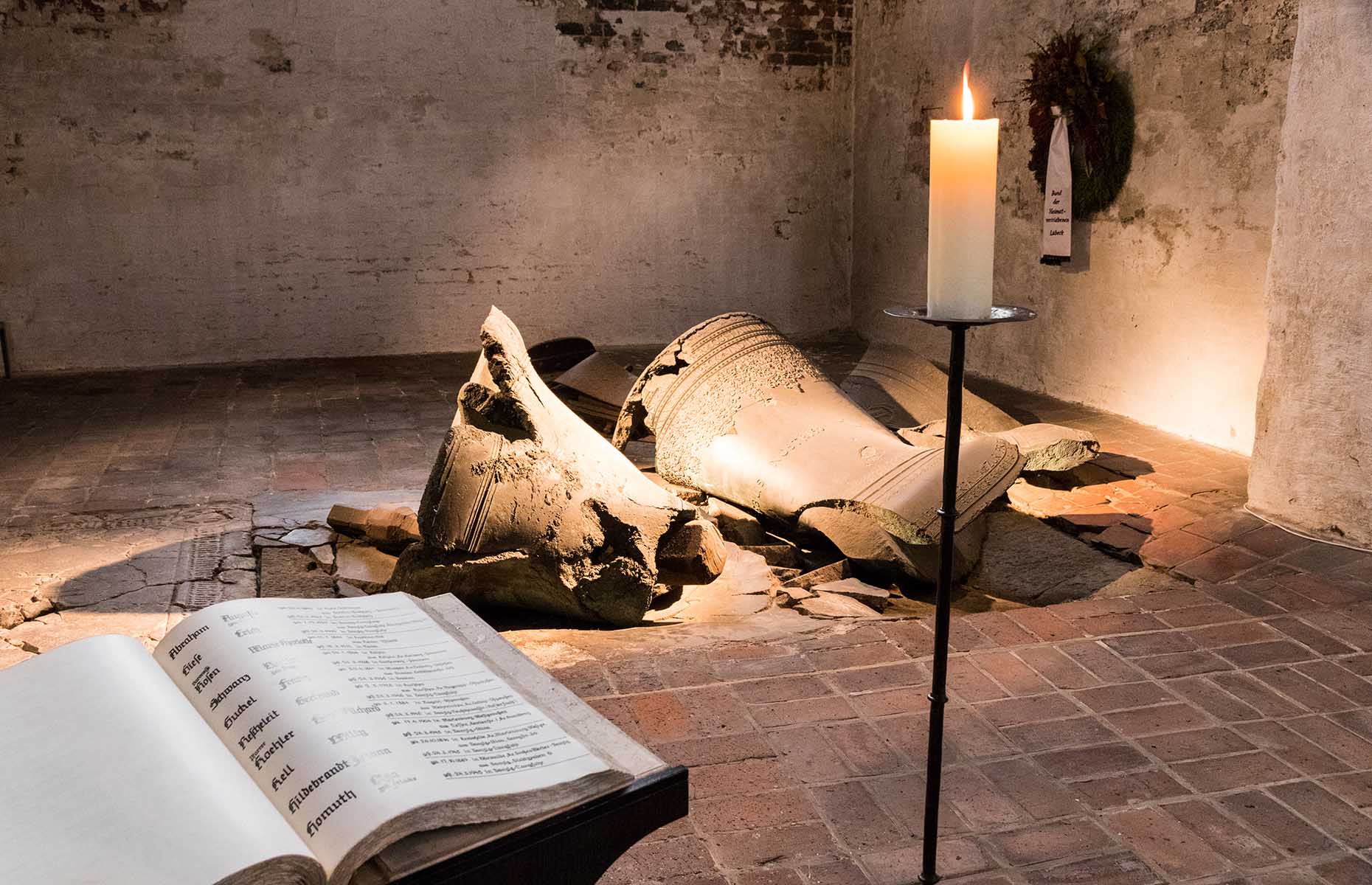 Joaquin Ossorio Castillo/Shutterstock
Joaquin Ossorio Castillo/Shutterstock
The remains of two were left exactly where they fell, and the caved-in section of flooring is a reminder of their weight. Built with more that 1.5 million bricks, St Mary’s is one of the world’s largest Gothic-style brick churches. Highlights include the elaborate marble epitaphs in the church’s side naves and the huge wooden altar, covered in gold leaf.
Saturday
Grab a coffee at: Fräulein Brömse, a beautiful café tucked inside Lübeck’s former monastery and named after Adelheid Brömse, a successful tradeswoman in the 1500s. Much of the café’s beautiful crockery and cutlery comes from nearby antique markets, and the owners are passionate about local, organic produce. We recommend one of the chunky scones, washed down with a cup of lime blossom tea.
Learn about Lübeck’s history at: the European Hansemuseum, which focuses on the history of the Hanseatic League and its connections to Lübeck. It is huge, hi-tech and all about interactivity; visitors start by using a screen to select where they’re from and the subjects they’re keen to find out more about.
The QR code-adorned ticket can then be used at various audio stations and visual displays to provide tailor-made insights into Lübeck’s past, and trading connections between Lübeck and the chosen destination.
Toast Lübeck at: The Schiffergesellschaft, inside a seafarers' guild hall dating back to 1535. During winter, merchants couldn’t set sail, so they’d stay at places like the Schiffergesellschaft and bide their time making models of wooden ships, many of which now hang from the ceiling of this spectacular wooden restaurant and beer hall.
The beers on tap include a fabulously hoppy König Ludwig Weizen Hell lager, while the food is delicious and regional – try the beef fillet with dumplings and mushrooms, or the wiener schnitzel with fried potatoes.
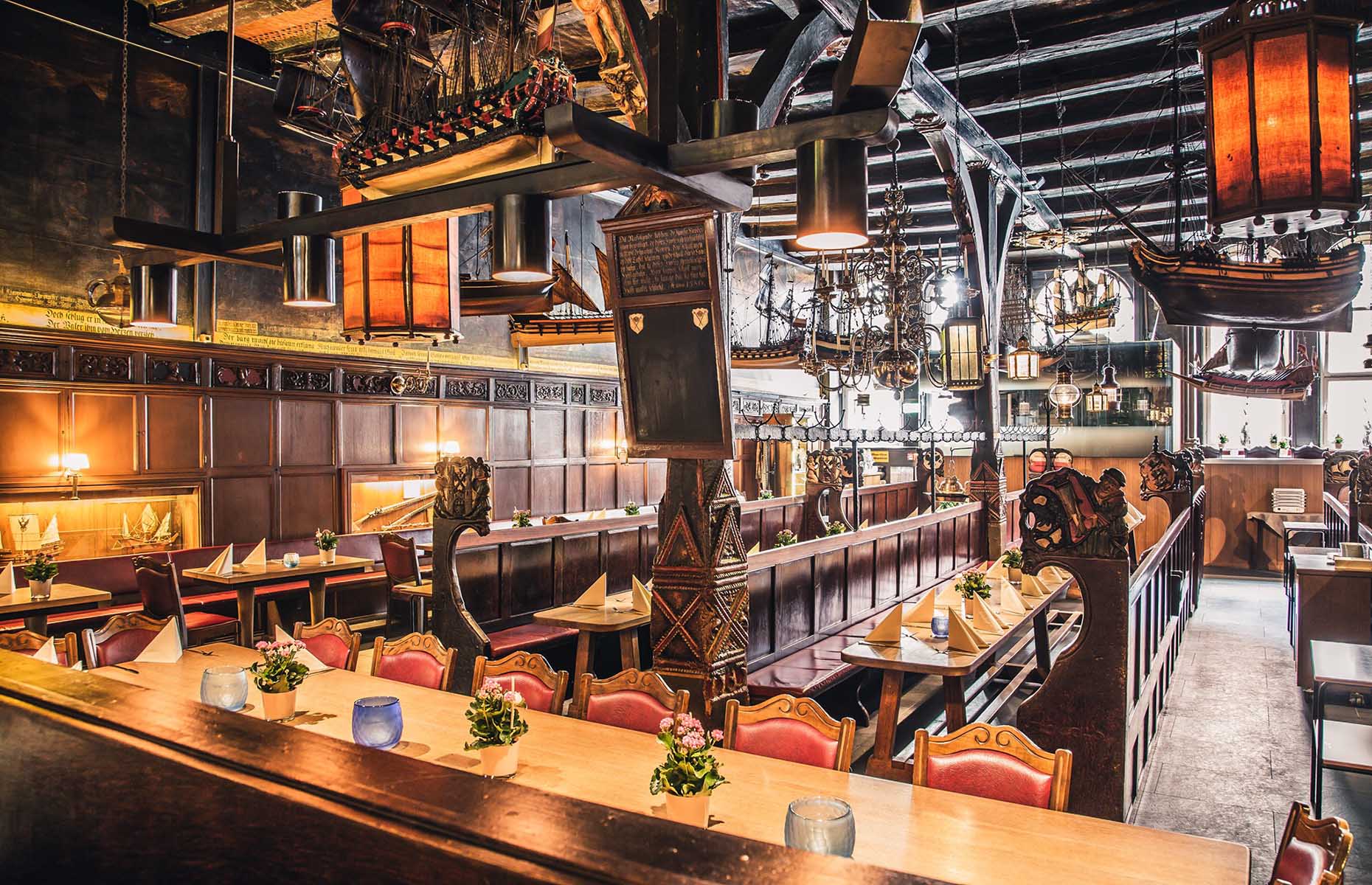 Schiffergesellschaft/Lübeck/Facebook
Schiffergesellschaft/Lübeck/Facebook
Sunday
Grab some breakfast at: Uter Café, tucked into an ancient townhouse on the Fleischhauerstraße. Opt for some homemade sourdough bread with Gouda cheese, or throw out the rulebook and treat yourself to a pre-midday sugar fix, courtesy of the café’s delicious Lübecker Nuss (Lübeck nut) cakes, filled with hazelnut cream and covered with marzipan.
READ MORE: Germany's most historic sights
Offload some Euros at: Lachmann's Goldschmiede, which is famous for its beautiful custom-made jewellery. Papeterie Holzapfel Design also has gorgeous notebooks, travel diaries and greetings cards.
We’ve mentioned Niederegger’s mind-bogglingly large selection of marzipan products, but there are plenty at the Lübecker Marzipan-Speicher store, too. When it comes to unusual souvenirs, you’ll struggle to beat a bottle of bright pink strawberry and marzipan liquor or, for caffeine addicts, some marzipan coffee.
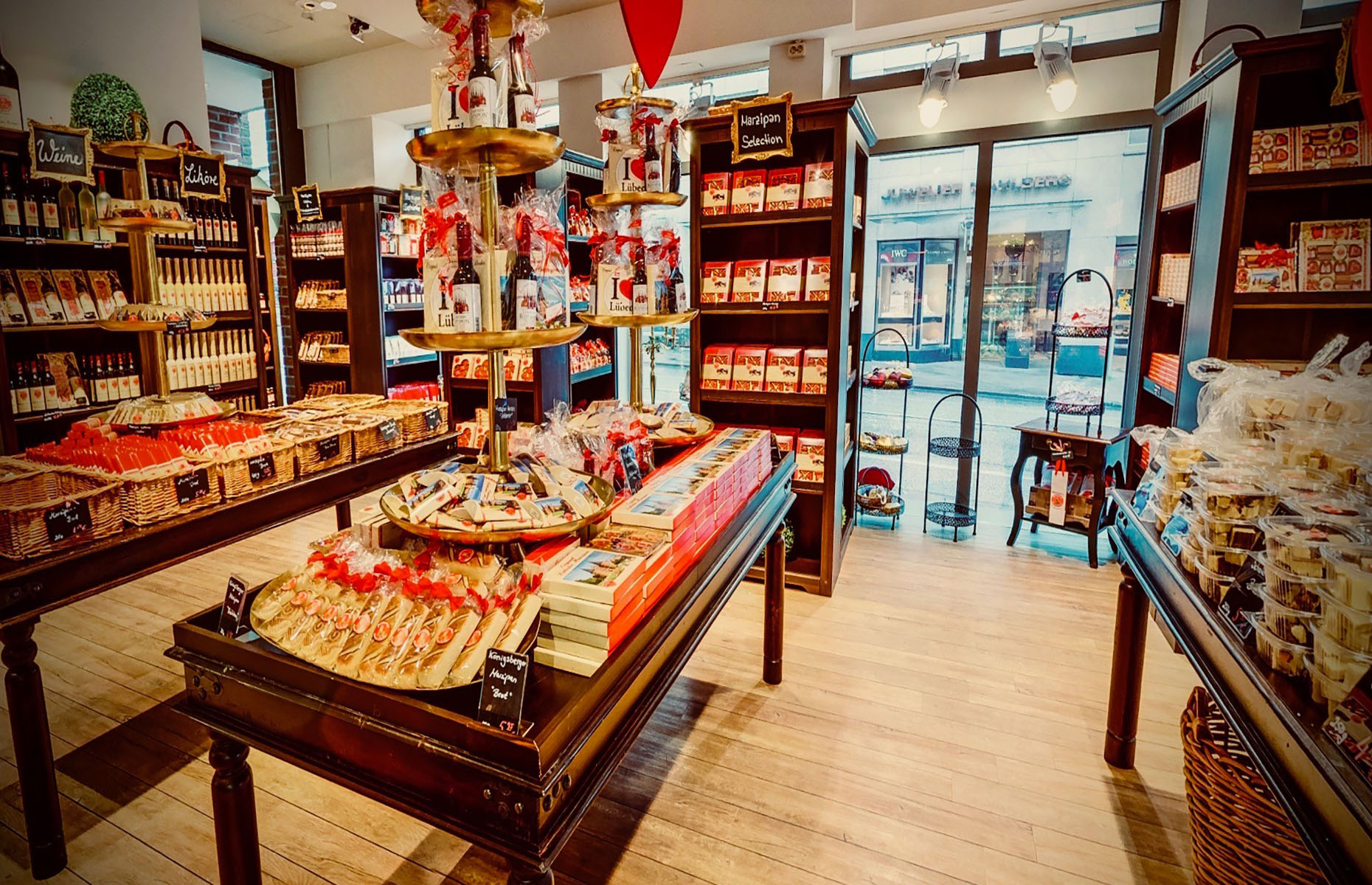 Lübecker Marzipan-Speicher seit 1995/Facebook
Lübecker Marzipan-Speicher seit 1995/Facebook
Get a fish supper at: Fangfrisch Lübeck, a seafood restaurant where there’s a real passion for local, seasonal produce. Fish comes from nearby Travemünde, on the Baltic sea, and there’s a great range of local beers. The cosy décor gives the restaurant the feel of a fisherman’s shack, and the most sought-after item on the menu is the delicious – and enormous – salmon burger.
Return flights from London Gatwick to Hamburg with Easyjet cost from £24.99, one way.
Lead image: Michael Abid/Alamy Stock Photo
Comments
Do you want to comment on this article? You need to be signed in for this feature